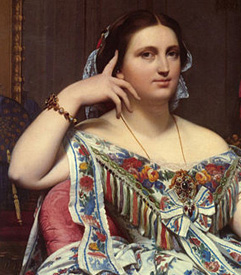 2
2Winckelmann was not alone in his desire to find examples of Greek painting at Pompeii and Herculaneum. At that point in time no Greek or Hellenistic paintings had been discovered and knowledge of their existence was confined to references in ancient texts. Hence, any painting that depicted a mythological subject was carefully examined in the hope that it might be an original Greek work. Despite the lack of actual Greek artefacts found in both Pompeii and Herculaneum, the two provincial cities were nevertheless used to reconstruct the image of Greece as the cradle of civilisation. By the late 1800s, even eminent archaeologists, including August Mau, described the wall-paintings as ‘copies of lost Greek and Hellenistic works’ and as a result dismissed them because of there perceived lack of intrinsic merit. “The period from 80 B.C. to 79 A.D. was as little creative in the field of painting as in that of sculpture. No new types appear, no improvements are worked out; the painter, as the sculptor, was an eclectic, who drew upon the creations of the past as suited his fancy, and contented himself with copying or imitating.” (Mau 1899: 461) Mau’s now discredited position was based on fragments of ancient texts that referred to Greek painting and Winckelmann’s contentious theories concerning the supremacy of Greek art. Unfortunately, however, Mau’s aesthetic judgment influenced many other archaeologists, who also possessed no professional understanding of either art or aesthetics.
Pompeii and the New Academies
Winckelmann’s publications on Classical art and the increasing numbers of wall-paintings found at Pompeii and Herculaneum, gave a tremendous boost to Europe’s growing number of Fine Art Academies. So much so that between 1750 and 1790 they increased from 40 to over 100. Before the 1750s ancient literary references to Greek painting, along with Renaissance art, provided much of the stimulus and theoretical underpinning for Academic study. The discovery of megalografia (large figurative paintings) in Herculaneum and later in the Villa dei Misteri, provided dramatically new inspirational sources for mythological painting (fig.1&3). At the same time, however, their mythological content made them surrogates for the lost Golden Age of Greek painting. By underpinning the growth of European Academies, paintings such as the Heracles and Telephus also created the foundation for the Neoclassical style. Many of the key artists of the day visited the Campanian sites to study the paintings in situ and to take inspiration from them. None more so than Ingres whose portrait of Madame Moitessier (1856) quotes directly from the Heracles and Telephus wall-painting discovered in the Basilica in Herculaneum (fig.1&2). In retrospect it is now clear that whilst the Academies of Europe flourished on the back of the classical ideal extracted from Roman wall-painting, the paintings themselves suffered from being constantly referred to as imitations or copies of lost Greek originals. Piranesi became so frustrated with this view that he wrote,
"I certainly should never have imagined that the Romans might some day be accused of being small minded and crude. The majority of their works, to be sure, have been destroyed by the ravages of time and war, but whenever I see their ancient monuments in Rome and throughout Italy, I am astonished that such a judgement should have occurred to men possessing any instruction at all. Yet people who attribute everything
 2
2
|